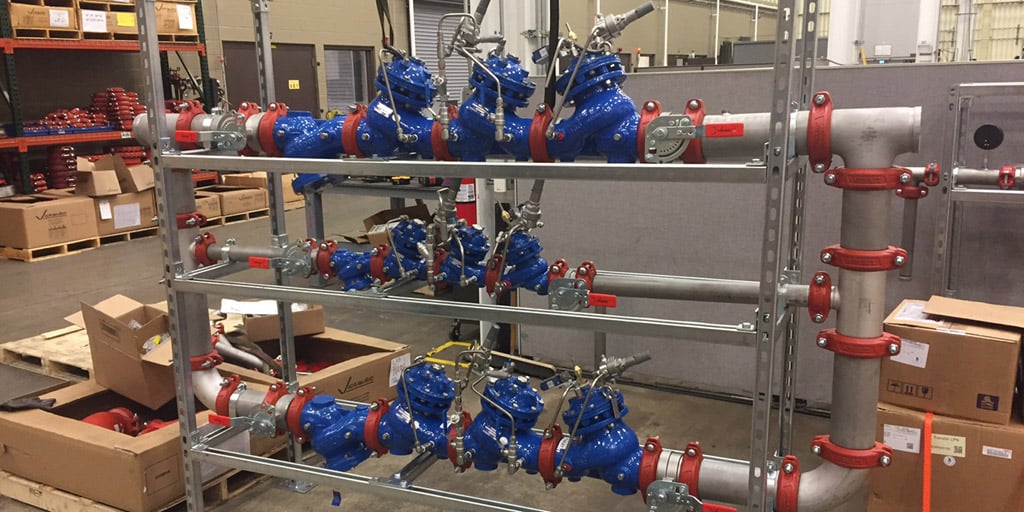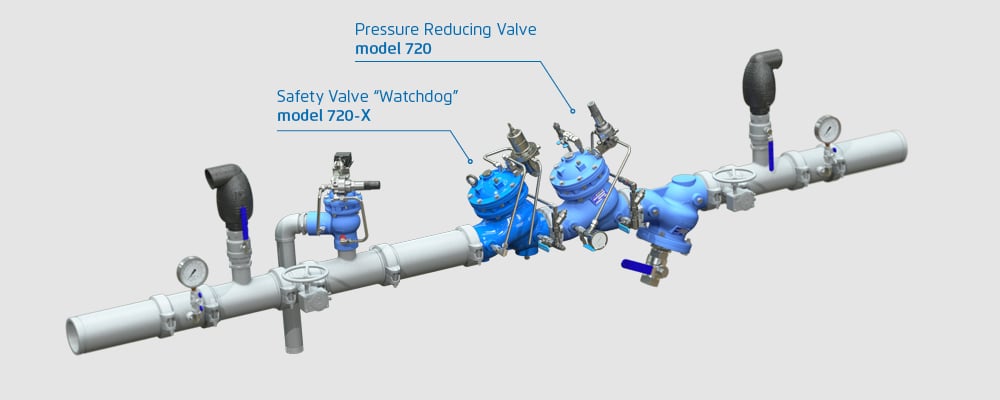With the growing demand in modern life for urban living, we have seen a surge in the number of buildings in cities worldwide, especially high-rise skyscrapers which seemingly defy the laws of gravity!
To achieve these sky-high targets, we need to consider the engineering challenges required to provide a smooth, quiet and uninterrupted supply of water throughout the building.
In a typical building, the potable water supply system is divided into pressure zones. Each zone is comprised of several floors and a Pressure Reducing Station. The Pressure Reducing Station is designed to reduce high incoming water supply pressure to a lower outgoing water supply pressure, in a consistent manner on all the floors within the zone.
Pressure reducing stations normally consist of two PRVs (Pressure Reducing Valves), one operational and the other as a reserve on standby. In the case of a breakdown or maintenance, the second PRV is used to ensure an uninterrupted water supply for the consumer.
In a building with many residents, the flowrate can have extreme variations and the Pressure Reducing Station must be able to efficiently deal with this.
Let us consider two typical scenarios:
In the first scenario, a resident in one of the units in a high-rise residential building wakes up in the middle of the night to use the toilet. The slow refilling of the toilet-flush tank is a very low demand for a pressure reducing station with a large valve designed to deal with much higher flows. This can cause an unacceptable degree of excessive wear, noise and possible cavitation damage on a large valve.
In the second scenario, during lunch hours & knock off times in a commercial building, the water usage in restrooms will be in high demand due to washing of hands & flushing of toilets. As a result, the main PRV will be operating at almost full capacity.
To enable the Pressure Reducing Station to deal with these extreme differences in flow, we recommend installing BERMAD’s Model 720-2B.

This valve has a small direct acting Bypass Pressure Reducing Valve built into its control trim that takes over the pressure regulation from the large valve when the flow becomes extremely low. It works silently, efficiently and with minimum stress and wear on the pressure reducing station.
Having a low flow bypass PRV such as BERMAD’s Model 720-2B will prolong the lifespan of the station, minimizing downtime and maintenance. It represents a good investment with long-term benefits to the building’s residents and administration.












